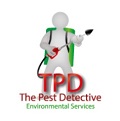Pest Control - Spiders
Categories
SIGNS OF RODENTS
WHAT TO LOOK FOR
Spider Control

How To Identify A Spider
Appearance
Eight legs, two body regions, no wings or antennae.
Behaviour, Diet & Habits
Some spiders like moisture and are found in basements, crawl spaces and other damp parts of buildings. Others like dry, warm areas such as subfloor air vents, upper corners of rooms and attics. They hide in dark areas.
They feed on insects, other spiders and any other prey they are able to subdue.
Reproduction
Females produce an egg sac from which emerge spiderlings. Spiderlings undergo a series of molts and eventually become adults. Males of many spider species court the female. For example, male jumping spiders perform elaborate dances to attract the attention of a female. Mating can be a dangerous event for males, since they may become a meal for the female afterwards.
How Do They Get in the Home?
Spiders commonly enter homes in two primary ways: entering through open, poorly screened windows and doors and through cracks and gaps around door and window frames. Most of the time, spiders come inside the home looking for prey. The other common method of entry is accidentally hitchhiking inside boxes, on outdoor items and numerous other things that are brought inside a home or business. Contact your pest management professional if you find spiders in your home. Your pest management profession will conduct an inspection and a create a comprehensive control plan that is based on the inspection findings.
More Information
Tens of thousands of spider species have been identified throughout the world. These arachnids have eight legs and two body segments. Spiders have three or four pair of eyes. Many spiders have poor vision, but some species of spiders, such as the jumping spider, have exceptional vision.
Spiders do not have chewing mouthparts and commonly utilize digestive enzymes in their saliva to break prey down before consuming it. Additionally, the gut of a spider is too narrow to allow for consumption of large food particles. Almost all spider species are predators, although one plant-feeding species has been documented.
The most venomous Spider found in the South Coast Regions (especially Dorset) is the Infamous False Black Widow ((Steatoda nobilis). It has distinctive cream markings on its bulbous body and is brown with reddish legs. Its bite can be extremely painful to humans and should be avoided at all costs.
What Pest Detective Does
We are experts in Spider identification and control and we can quickly identify any spider that you may have concerns about. We aim to be with you within 90 minutes of the initial call so we can then deal with the problem immediately.
Spider Control

How To Identify A Spider
Appearance
Eight legs, two body regions, no wings or antennae.
Behaviour, Diet & Habits
Some spiders like moisture and are found in basements, crawl spaces and other damp parts of buildings. Others like dry, warm areas such as subfloor air vents, upper corners of rooms and attics. They hide in dark areas.
They feed on insects, other spiders and any other prey they are able to subdue.
Reproduction
Females produce an egg sac from which emerge spiderlings. Spiderlings undergo a series of molts and eventually become adults. Males of many spider species court the female. For example, male jumping spiders perform elaborate dances to attract the attention of a female. Mating can be a dangerous event for males, since they may become a meal for the female afterwards.
How Do They Get in the Home?
Spiders commonly enter homes in two primary ways: entering through open, poorly screened windows and doors and through cracks and gaps around door and window frames. Most of the time, spiders come inside the home looking for prey. The other common method of entry is accidentally hitchhiking inside boxes, on outdoor items and numerous other things that are brought inside a home or business. Contact your pest management professional if you find spiders in your home. Your pest management profession will conduct an inspection and a create a comprehensive control plan that is based on the inspection findings.
More Information
Tens of thousands of spider species have been identified throughout the world. These arachnids have eight legs and two body segments. Spiders have three or four pair of eyes. Many spiders have poor vision, but some species of spiders, such as the jumping spider, have exceptional vision.
Spiders do not have chewing mouthparts and commonly utilize digestive enzymes in their saliva to break prey down before consuming it. Additionally, the gut of a spider is too narrow to allow for consumption of large food particles. Almost all spider species are predators, although one plant-feeding species has been documented.
The most venomous Spider found in the South Coast Regions (especially Dorset) is the Infamous False Black Widow ((Steatoda nobilis). It has distinctive cream markings on its bulbous body and is brown with reddish legs. Its bite can be extremely painful to humans and should be avoided at all costs.
What Pest Detective Does
We are experts in Spider identification and control and we can quickly identify any spider that you may have concerns about. We aim to be with you within 90 minutes of the initial call so we can then deal with the problem immediately.
SIGNS OF RODENTS
WHAT TO LOOK FOR
Pest Detective Discounts
Armed Forces Discount

Pensioner Discount

Categories
Have Any Question!
DON'T HESITATE TO CONTACT US ANY TIME.
Have Questions ?
Call us now
Head Office: 01202 042814
About Pest Detective
We specialize in 23 different kinds of pest, and we're also qualified to handle a much wider range of pest control needs. If you have a pest problem that's not covered in our pest library, be sure to contact us for information about what services we offer for your particular needs.
We are open
on Call
24 hours - 7 days a week
Services
Need support?
Drop us an email
Contact us
Locations
- The Pest Detective - 01202 042814
- Pest Detective Poole - 01202 042814
- Pest Detective Bournemouth - 01202 042814
- Pest Detective Blandford - 01258 395021
- Pest Detective Ringwood - 01425 896029
- Pest Detective Wareham – 01929 498149
- Pest Detective Dorset - 01305 360649
- Pest Detective Dorchester - 01305 360649
PEST DETECTIVE SOCIAL
PEST DETECTIVE SOCIAL
PEST DETECTIVE COVERAGE
Poole: Branksome, Broadstone, Canford Cliffs, Sandbanks,, Charminster, ,Hamworthy, Oakdale, Upton, Westborne, Canford Heath, Parkstone, Penhill, Lytchett Minster, West Parley, West Moors, and Wimborne.
Bournemouth: Ashley Heath, Boscombe, Charminster, Moordown, Kinson, Kings Park, Queens Park, Winton, Ferndown , Southbourne, Meyrick Park, Pokestown, Mudeford ,Verwood, West Parley, West Moors and Highcliffe.
Blandford: Child Oakford, Milton Abbas, Sturminster Marshall, Sturminster Newton, Hazelbury Bryan, Marnhull, Tarrent Hinton, Milborne St Andrew, Witchampton and Wimborne.
Wareham & Swanage: Purbecks, Bere Regis, Bindon Abbey, Corfe castle, Worth Matravers, Moredon and Wool.
Ringwood: West Hampshire, Bransgore, Burley, Fordingbridge, Highcliffe and New Milton.
Dorset: Poole, Bournemouth, Christchurch, Wareham, Swanage, Purbecks, Wimborne, Blandford, Ringwood, Dorchester and Weymouth..
Dorchester & Weymouth: Abbotsbury, Puddletown, Upwey, Portland and Warmwell.
© 2016 The Pest Detective - All Rights Reserved | Site Map | Terms & Conditions | Privacy Policy

